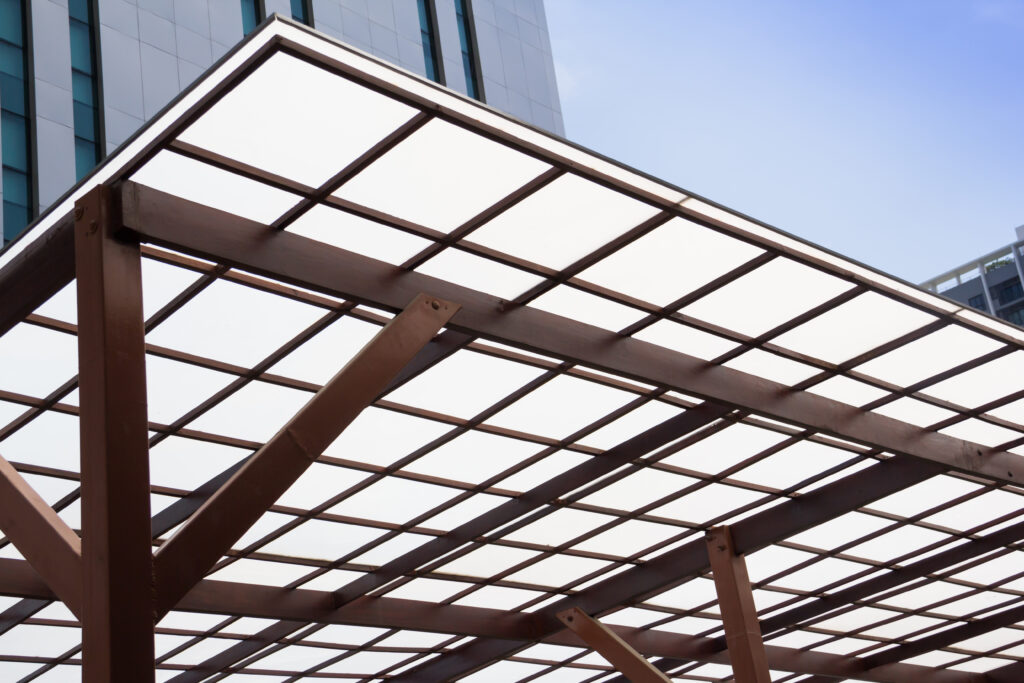Polycarbonate or Glass?
To come up with a conclusive decision on which material makes for a better investment, one has to look at the pros and cons of both building materials.The Pros of Polycarbonate Sheets
- Its high durability offers resistance to impact and fracture, making it a sturdy roofing material.
- The transmittance properties of polycarbonate sheets allow as much as 90 percent of light to pass through.
- Polycarbonate sheets can have properties that enable the blocking of 100 percent of harmful ultraviolet (UV) light.
The Cons of Polycarbonate Sheets
- While there are no apparent disadvantages to polycarbonate sheets, it does have some limitations, such as low fatigue endurance.
- Its mechanical properties eventually deteriorate when exposed to water at 60°C for extended periods.
- It requires appropriate time to dry prior to processing.
The Pros of Glass
- The redeeming quality of glass, which also makes it an expensive material, is its aesthetic characteristic – it provides interiors to appear more spacious, while giving buildings a first-class look.
- It provides 100 percent natural light, which can affect the well-being and productivity of workers and employees.
- It is energy-efficient to use glass, as it lessens heating costs.
The Cons of Glass
- Glass can be a safety hazard due to its brittle nature. Apart from being a fragile material when used haphazardly, people also tend to walk straight into glass walls, prompting accidents and injury.
- Using glass can be costly, as it requires a lot of processing at high temperatures to deliver, which makes it an expensive material to handle in construction.
- Compared to polycarbonate, the maintenance needed to clean and dust-proof glass will warrant extra costs. In the event of breakage, costs to repair or replace can double.
So, which is better; glass or polycarbonate?
Given the advantages and benefits listed above for both polycarbonate and glass, one can make comparisons relevant to their construction needs or renovation requirements. If one is after durability and cost-effectivity, then polycarbonate sheets seem like the better investment for any property. Glass, on the other hand, remains to be a preferential material that has to be carefully considered.
If one wants to find out what’s the difference between polycarbonate and glass, then the primary answer, among other key distinctions, is usability. Polycarbonate offers a handful of benefits that come at a fraction of the cost when using glass, which makes it an efficient solution for roofing needs and other applications. That being said, there is a wide range of glass products that also serve as efficient building materials, so long as they fit within the budget.
If it’s an investment that you’re after, either material can really help increase the value of any property. It depends on the structure’s goal of incorporating either material – are you after form or function?
Build It Right
Duralon, a leading polycarbonate sheet supplier in the Philippines with 21 branches nationwide, can help you with all your polycarbonate needs. From roofing to sound barriers, clear skylights, translucent partitions, and decorative wall backgrounds – we have a polycarbonate solution for your home, office, or warehouse.
Don’t hesitate to contact us or request for a quote.

